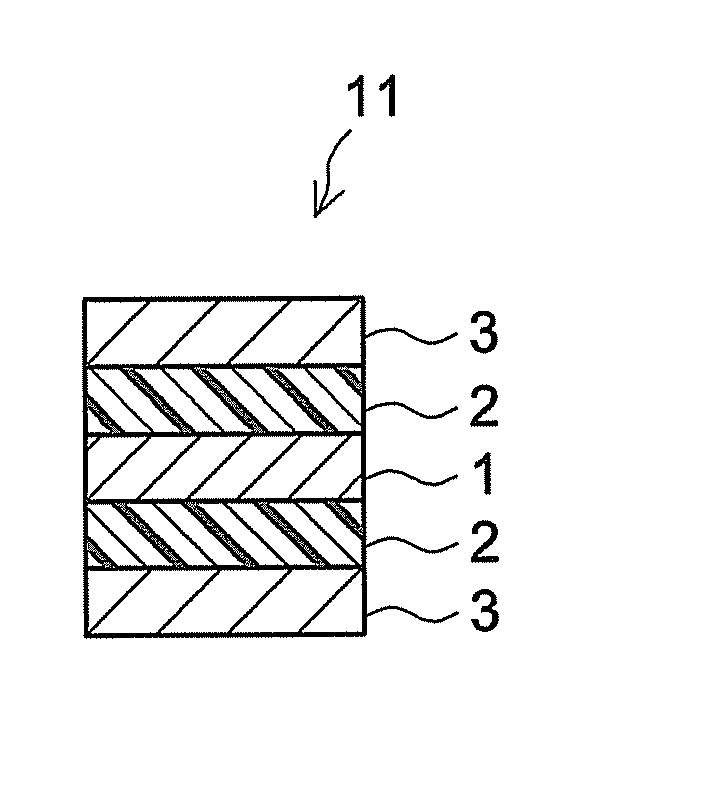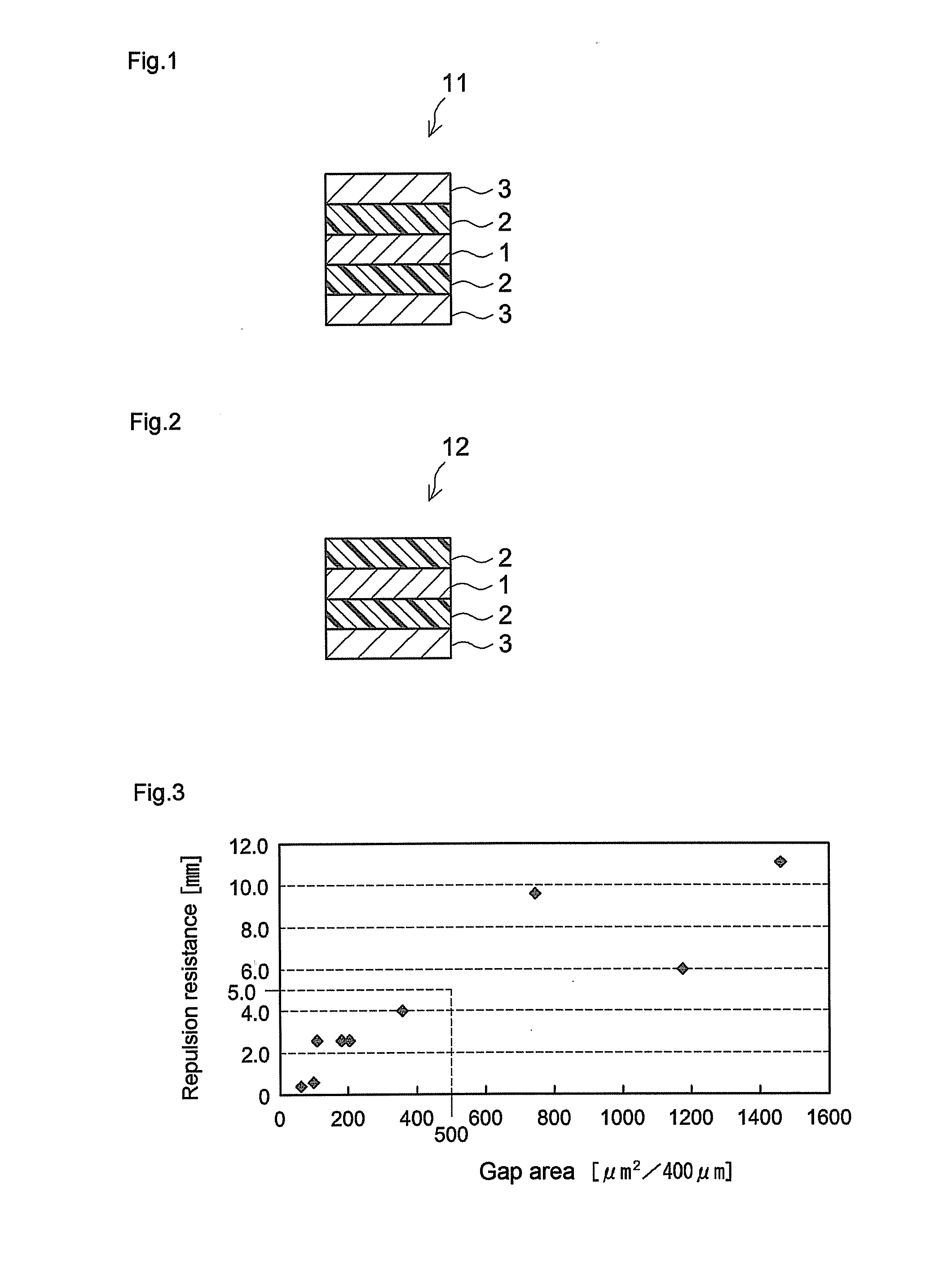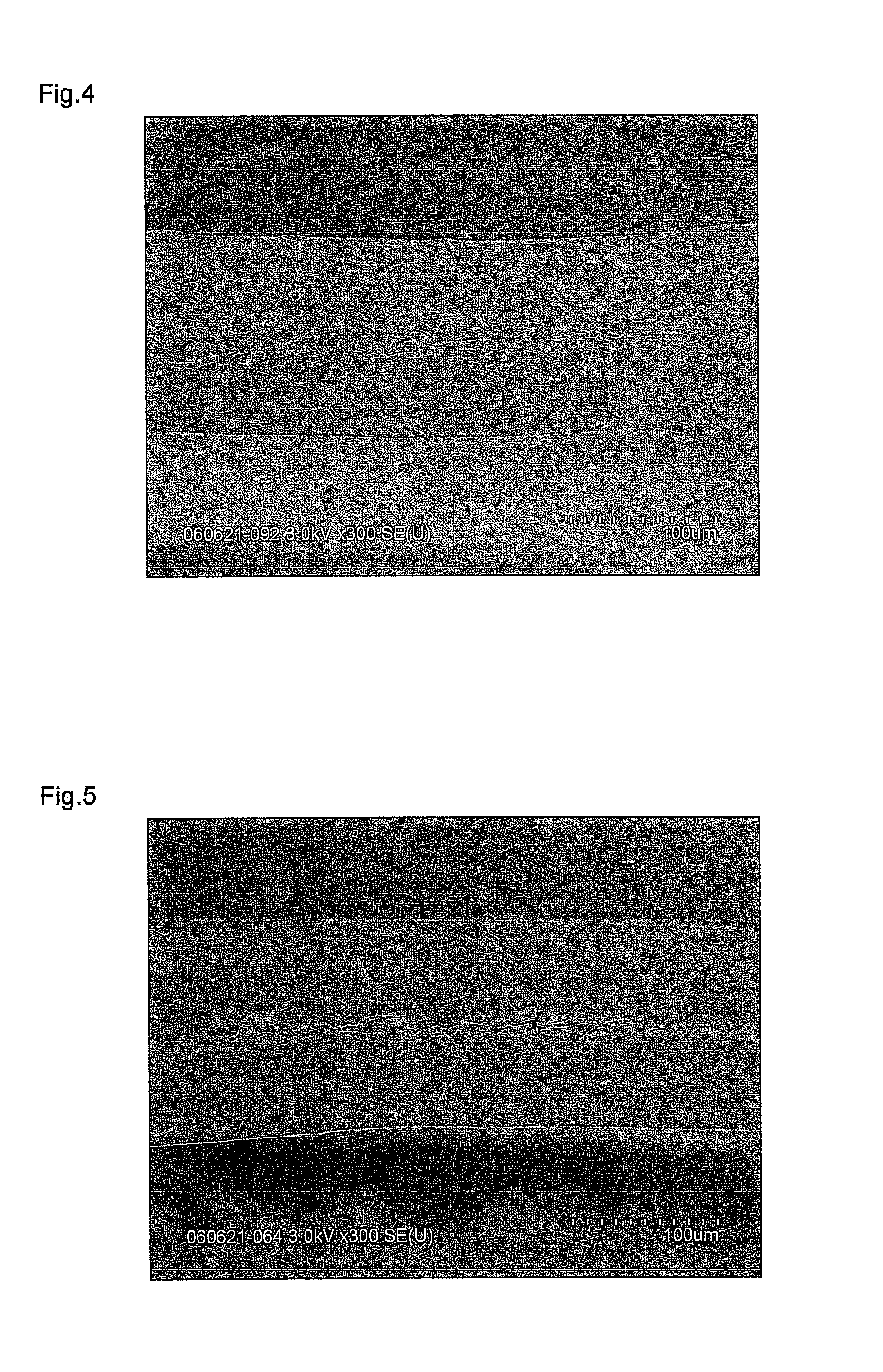Method for producing double-sided pressure-sensitive adhesive sheet
a technology of pressure-sensitive adhesives and adhesive sheets, which is applied in the direction of film/foil adhesives, coatings, transportation and packaging, etc., can solve the problems of double-sided psa sheets being liable to joint floating, peeling, and inherent psa performance not being properly reflected in the performance of double-sided psa sheets, and achieve excellent adaptability to the surface shape
- Summary
- Abstract
- Description
- Claims
- Application Information
AI Technical Summary
Benefits of technology
Problems solved by technology
Method used
Image
Examples
example 1
[0056]0.279 g of 2,2′-azobis[N-(2-carboxyethyl)-2-methylpropionamidine]hydrate (polymerization initiator) (trade name “VA-057”, available from Wako Pure Chemical Industries) and 100 g of ion-exchanged water were placed in a reaction vessel equipped with a condenser, a nitrogen inlet, a thermometer and a stirrer, and stirred for 1 hour as nitrogen gas was introduced. This was maintained at 60° C., and 400 g of a monomer raw material emulsion (obtained by adding 29 parts butyl acrylate (BA), 67 parts 2-ethylhexyl acrylate (2EHA), 4 parts acrylic acid (AA), 0.5 parts diacetone acrylamide (DAAM), 0.04 parts dodecanethiol (chain transfer agent) and 2 parts sodium polyoxyethylene lauryl sulfate (emulsifier) to 41 parts of ion-exchanged water and emulsifying) were gradually added dropwise over 4 hours to promote emulsion polymerization reaction. After completion of the addition, this was cured (aged) by storing it for 3 hours at the same temperature. 10% ammonium water was added to adjust ...
example 2
[0067]The aforementioned PSA composition (A) was applied to a nonwoven fabric substrate different from that of Example 1 to prepare a double-sided PSA sheet. That is, a nonwoven fabric of 80% hemp and 20% pulp with a grammage of 7 g / m2, a thickness of 18 μm and a bulk density of 0.39 g / cm3 (tissue paper available from Nippon Daishowa Paperboard; hereunder sometimes called “nonwoven fabric b”) was used as the nonwoven fabric substrate in this example. In all other respects, the double-sided PSA sheet of Example 2 was prepared as in Example 1. This double-sided PSA sheet was evaluated as in Example 1. The gap area was 182 μm2 / 400 μm and repulsion resistance (peeling height) was 2.6 mm.
example 3
[0068]A rayon nonwoven fabric with a grammage of 14 g / m2, a thickness of 45 μm and a bulk density of 0.31 g / cm3 (rayon paper available from Nakao Seishi Co., trade name “Bonlite-P14G”; hereunder sometimes called “nonwoven fabric c”) was used as the nonwoven fabric substrate in this example. In all other respects, the double-sided PSA sheet of Example 3 was prepared as in Example 1. This double-sided PSA sheet was evaluated as in Example 1. The gap area was 204 μm2 / 400 μm. and repulsion resistance (peeling height) was 2.6 mm.
PUM
| Property | Measurement | Unit |
|---|---|---|
| Density | aaaaa | aaaaa |
| Volume | aaaaa | aaaaa |
| Length | aaaaa | aaaaa |
Abstract
Description
Claims
Application Information
 Login to View More
Login to View More - R&D
- Intellectual Property
- Life Sciences
- Materials
- Tech Scout
- Unparalleled Data Quality
- Higher Quality Content
- 60% Fewer Hallucinations
Browse by: Latest US Patents, China's latest patents, Technical Efficacy Thesaurus, Application Domain, Technology Topic, Popular Technical Reports.
© 2025 PatSnap. All rights reserved.Legal|Privacy policy|Modern Slavery Act Transparency Statement|Sitemap|About US| Contact US: help@patsnap.com



